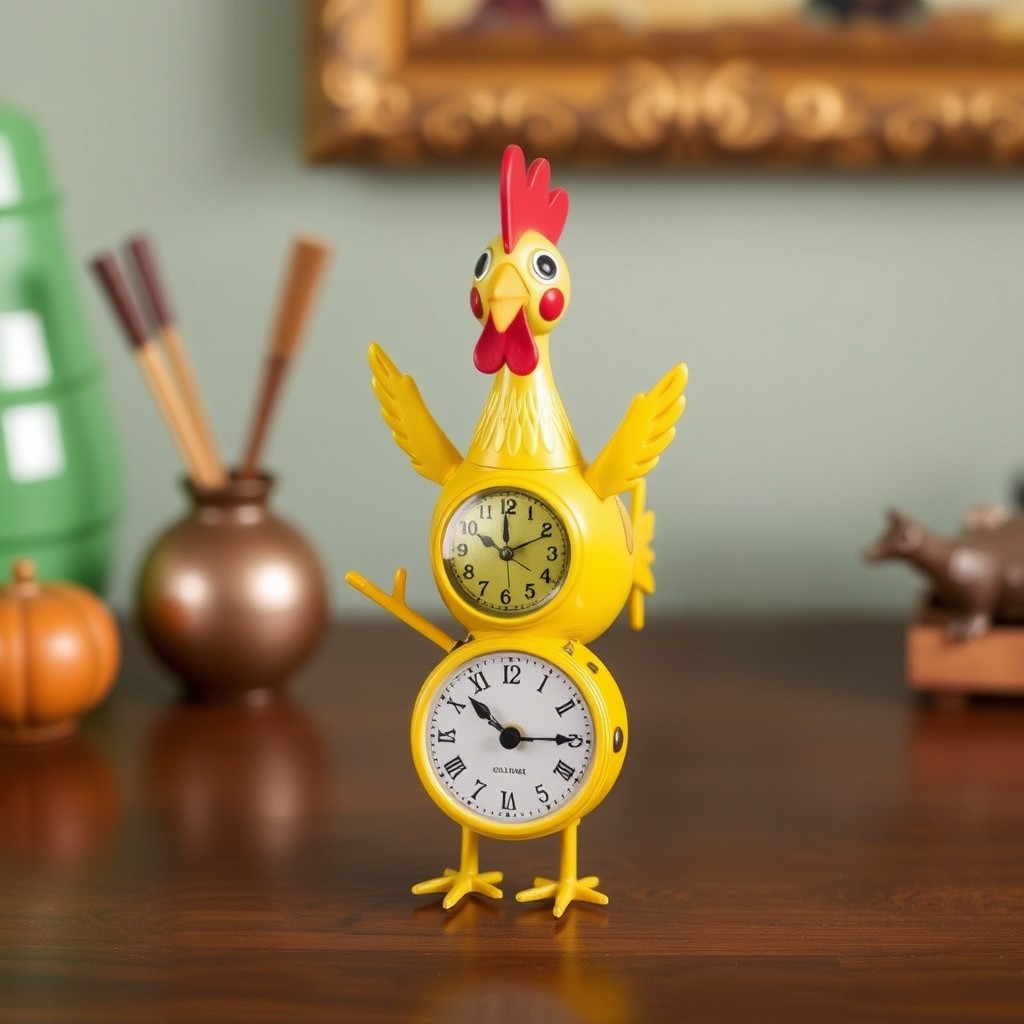Complete Care Guide for Vintage Clockwork Toys
Hands-on, conservation-minded tips to clean, store, and run your Yellow Jumping Chicken safely for decades.
Daily Care & Handling
Clean, calm, and supported handling prevents 90% of accidental damage. Treat the toy as a small mechanism, not a plush.
Touch & Lift
Wash hands; avoid lotions. Lift from beneath with two hands—never by head, wings, key, or legs. Keep fingers off exposed metalworks to prevent skin-oil corrosion.
Quick Inspection
Before each demo: check fasteners, listen for scraping, and confirm the key engages smoothly. If something feels “gritty”, stop and assess.

Cleaning & Light Care
Exterior
Dust with a soft brush (make-up or sable). For stubborn grime, dab (don’t rub) with a barely damp microfiber and neutral soap—far from openings. Always spot-test in an inconspicuous area.
Mechanism
No water, no sprays. Use compressed air at a distance to lift dust. If action is stiff, stop. Lubrication and disassembly are jobs for a specialist.
Storage That Preserves
Environment
Cool, dry, stable. Target 18–22 °C and 40–55% RH. Avoid attics, basements, radiators, and windows.
Light & Display
Keep out of direct sun. Use UV-filtering glazing for display cases. Rotate pieces so one side doesn’t fade.
Running the Mechanism
A gentle wind every 2–3 months keeps springs lively. Wind slowly until light resistance—never to the stop. Let the toy run fully down on a clear surface.
Warning Signs
Grinding, sudden stops, reduced runtime, or a key that “snaps back” means: stop and seek help.
Common Problems
Spring Fatigue
Old mainsprings lose tension. Replacement to original spec is a specialist task—don’t improvise parts.
Dust & Debris
Dust adds friction. Professional cleaning restores smooth action without over-oiling, which attracts more dust.
When to Seek a Professional
If winding is hard, action is erratic, or parts are loose—pause. Photos and a simple description help a restorer triage quickly.
Choose specialists with documented work on vintage clockwork. Ask for before/after examples and methods that preserve originality.
Long-Term Preservation
Records & Photos
Keep condition logs, invoices, and high-res photos. Provenance and maintenance history protect value and guide future care.
Insurance & Security
Consider collection insurance and secure display. Review valuations yearly if market shifts.
Recommended Care Schedule
Daily
- • Clean hands
- • Quick visual check
- • Proper placement after use
Weekly
- • Dusting & case clean
- • Light mechanism check
- • Update notes if needed
Monthly
- • Environment review (RH/Temp)
- • Inspect fasteners & wear
- • Rotate display orientation
Yearly
- • Professional condition report
- • Deep clean if advised
- • Insurance appraisal update
Need Expert Care Advice?
Send photos and your notes—our Paris team will suggest safe next steps.
